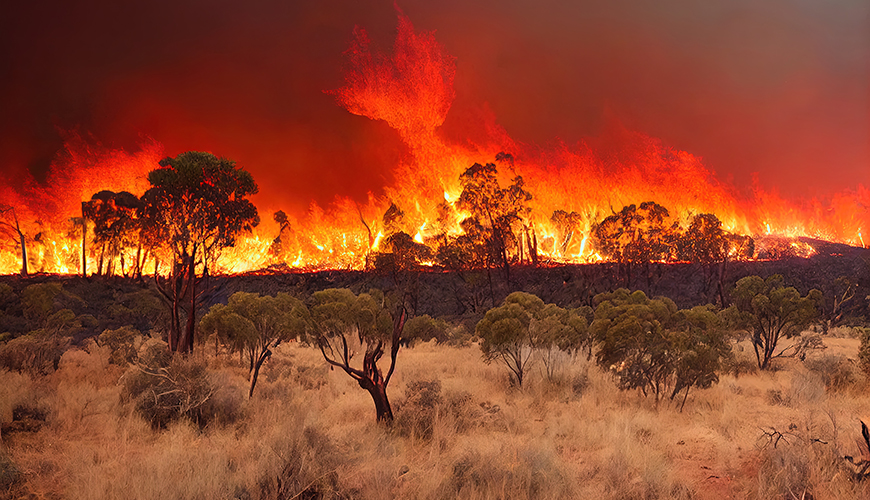In 2024, forest fires reached alarming levels globally, significantly affecting regions such as the Amazon. Every year, thousands of hectares of Amazon forests are devastated by fire, with serious environmental and social consequences. The expert Carlos Torres Becerra explains the causes of fires, their ecological and social impact, and the strategies necessary to prevent them.
Read the complete edition of EL BOSQUE ES VIDA magazine (in Spanish).
In January of this year and for almost a month, the whole world witnessed second by second, through the screens of their televisions and mobile phones, the terrifying images of a series of megafires that occurred in the metropolitan area and surrounding regions of Los Angeles (California). The flames reduced more than 15,000 hectares of forest to ashes, destroyed more than 16,000 structures and claimed 29 human lives.
Every year, forest fires devastate millions of hectares of forests, producing a lethal impact on biodiversity, climate balance, the economy, public health and the well-being of communities. Last year, one of the main affected was Brazil, where 22.38 million hectares of forest were incinerated, which led to an increase in the number of people affected by respiratory diseases and, according to the Copernicus monitoring system, more than 180 megatons of carbon dioxide were released into the atmosphere.
On the other hand, 2024 was the hottest year on record since the pre-industrial era and the global average temperature exceeded the recommended 1.5 degrees Celsius to keep climate change at bay, which, experts warn, will have serious consequences on a planetary level. Among them, the high possibility of an increase in forest fires, both in quantity and frequency.
What are forest fires and why climate change confronts us with a catastrophic scenario in this area. To understand this phenomenon better, we interviewed forestry engineer and lawyer Carlos Torres Becerra, an expert in disaster risk management.
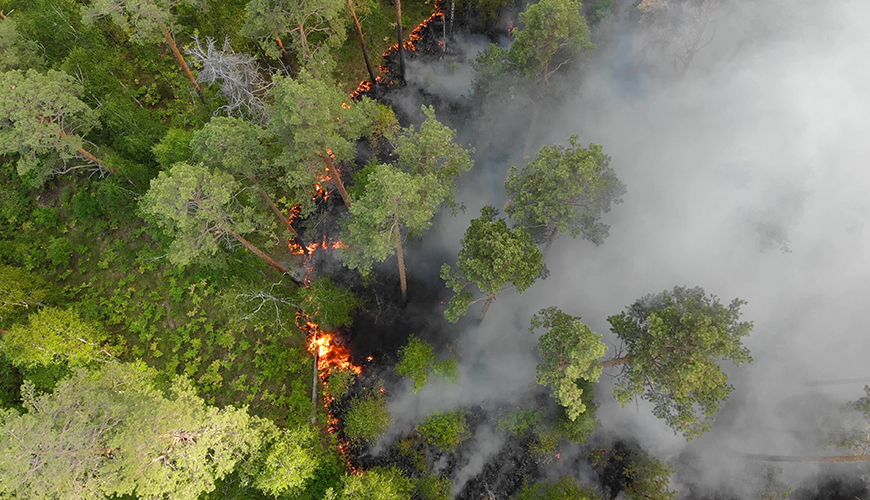
What is a forest fire?
Fire has been a valuable tool for human beings, which contributed to their evolution. However, with the passage of time, when it comes to defining public policies, it has been framed as an ‘enemy’ and that is why today, in several countries, there is talk of firefighting programs.
Today, it is still a very helpful tool and is present in many of our daily activities. For example, we use it for cooking or in casting processes. The problem arises when we do not know how to use it or do not take the appropriate measures and it gets out of control, consuming areas that were not planned to burn.
To classify forest fires, international databases start from two factors: the type of cover that is burning and the size of the affected area. The first varies according to each country’s concept of what is meant by a “forest area”, which depends on the type of vegetation cover they have, which must mostly correspond to trees and shrubs. The second varies according to the regulations of each nation and is linked to the density of tree species existing within the affected area.
In Colombia we can find about ten different definitions in technical documents or training booklets. Resolution 0373/20 of the National Unit for Disaster Risk Management (UNGRD) defines vegetation cover fires and forest fires as if they were two different phenomena: in the first case, it is said that it is a “fire on vegetation cover of natural or anthropic origin that spreads uncontrollably, that causes ecological disturbances affecting or destroying an area of more than 5,000 m2, whether in urban or rural areas, which responds to the type of vegetation, amount of fuel, oxygen, meteorological conditions, topography, human activities, among others”; this is half a hectare, the equivalent of an official soccer field. In the second, it defines a forest fire as “fire originating in rural areas that spreads freely and uncontrollably, whose fuel is living or dead vegetation cover.” Thus, it is difficult to specify the type of vegetation cover affected and the size of the area covered by the fire.
Do forest fires have any kind of classification?
They can be of three kinds: of natural origin, when they occur as a result of volcanoes or lightning. In the first case, due to burning lava, and in the second because although these electrical discharges are usually accompanied by rain, which reduces the possibility of fires occurring, in some areas they occur without precipitation. Such is the case of regions such as the Orinoquia or part of the Amazon, where Colombia does not have adequate instrumentation coverage for its measurement, which allows it to have the real dimension of its magnitude.
Another class of fires are those that result from the interaction of nature with human beings: there is the famous “magnifying glass effect”, that is, the interaction of the sun’s rays with glass. However, as a result of different investigations carried out in the United States, it has been found that it is difficult to produce a fire for this cause in a natural environment and on very few occasions it has been possible to perform it in the laboratory. It is worth noting that for this purpose glass of the same quality as the bottles and containers used in everyday life are used
The third type of forest fires are those of anthropic origin. They occur as a consequence of the way in which man relates to fire, when he uses it in his activities without taking the proper precautions. It usually occurs when humans use fire to fill a need and it gets out of control by covering areas they did not intend to affect. An example of this is burning, which is usually done to remove garbage, prepare land for agriculture or livestock or convert land use from forest areas to livestock or agricultural uses.
Another anthropic cause, but of an accidental type, is when accidents occur such as explosions, structural fires or the fall of power lines within vegetation areas, which end up becoming forest fires.
Most common causes of fires
- According to the Ministry of Environment and Sustainable Development (1998), the most common causes of fires are:
- Due to negligence: When it derives from the use of fire, on agricultural land or in the forest due to not having taken measures to prevent its spread.
- Carelessness: When a person uses fire without measuring the consequences that can be generated.
- Accidental: When a fire is caused without having had the intention of starting it.
- Intentional: When a fire is started with a specific purpose, whatever it may be. They are classified as: Incendiary: One who voluntarily causes a fire. Arsonist: Pathological condition that incites to cause a fire.
What meteorological or climatic factors affect whether a fire acquires more speed or strength and spreads quickly?
It is important to understand the process of a fire. Once fire appears in a place, it dehydrates the vegetation around it. When it has dried, this material has the ideal conditions to be consumed. When consumed, the fire grows, generating more heat, drying everything that is adjacent and consuming it. And so on. For this reason, in the dry season, when the water content of the vegetation is minimal, fires spread at high speed.
When the fire is moderately consolidated, the topography, climate and type of vegetation contribute to the generation and spread of fire, until it becomes a fire. For example, on a sloping terrain, the distances between plants are shorter, allowing the fire to spread more quickly. On the other hand, temperature, precipitation, relative humidity, sunshine and solar radiation are climatic factors that help the generation of fires. Others, such as wind speed and direction, are responsible for making it grow much more, contributing to its spread.
Finally, the type of vegetation is more associated with the generation of fire. When there is very dry vegetation and quite small leaves, the fire ignites very easily. Other types of woody vegetation cause the fire to generate more heat, therefore contributing to the spread.
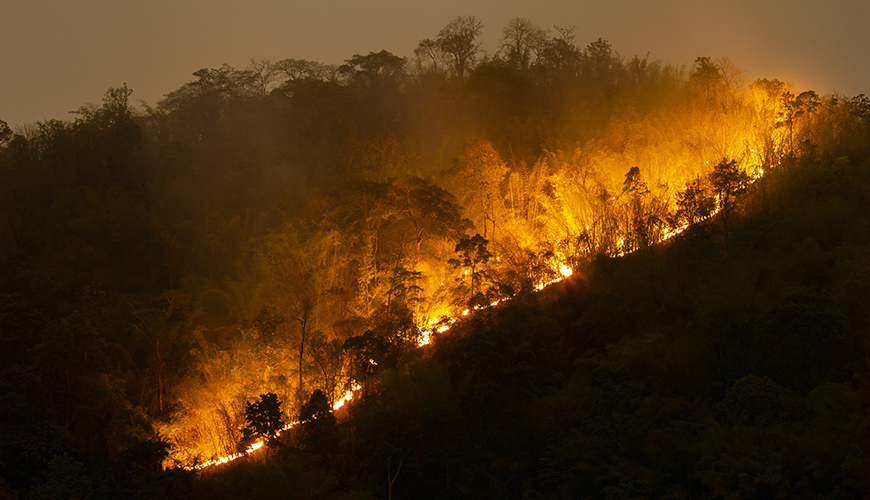
How do sunshine and radiation affect forest fires?
These are atmospheric variables that affect photosynthesis and the water balance of plants. By increasing the level of sunshine or radiation, plants will have less energy for their vital processes, entering a state of water stress, because the greater the brightness and solar radiation, the greater the transpiration and loss of water. The reduction of humidity in vegetation makes it more easily consumed by fire.
What temperature could a forest fire reach?
That depends on the type of plant. Those with large logs, due to the physical and chemical properties of the wood, have a good calorific value. In this case, fires can reach between 800°C and 900°C. The maximum documented temperature of a forest fire is approximately 1,000°C.
What are the main consequences of forest fires?
They directly have a negative impact on the elements of ecosystems, as they cause the death of flora and fauna. There are other indirect consequences such as the impact on the soil, water, air and landscape. There are also others that are not seen, but are present, such as air pollution, the loss of habitat for species of flora and fauna, the loss of the structure and physical-chemical capacity of the soil or the pollution of water and the alteration of the hydrological cycle.
Why are soils and water affected?
Each type of soil has different physical, chemical and biological properties. When exposed to fire, these properties are altered, organic matter is burned, and a chemical reaction occurs that destroys its aggregates. On the other hand, trees help to compact it thanks to their roots. When it disappears due to the fire, the ground loses that support. In addition, the soil loses the ability to retain water, surface runoff increases, and erodes.
On the other hand, fires emanate different particles. The small ones have the ability to float in the air and move according to the speed and direction of the wind; However, larger particles, such as pieces of charcoal from burned plants, fall to the surface due to their weight. As the fire also affects the structure of the soil, when it rains it is easier for rain and runoff to wash away that surface layer, with residues from burned plants, generating sedimentation and contaminating streams and bodies of water.
Wildfires and climate change feed on and aggravate each other. According to the United Nations Environment Programme1, climate change worsens forest fires, due to the increase in extreme droughts, high air temperatures, low relative humidity, lightning and strong winds that, in turn, cause warmer, drier and longer seasons, an ideal scenario for the spread of fire. At the same time, fires worsen climate change by destroying sensitive and carbon-rich ecosystems such as peatlands or tropical forests. This turns landscapes into sources of carbon dioxide that, when burned quickly, enters the atmosphere, increasing global warming.
What is the impact of fires on human health?
Depending on the type of vegetation, the fire releases certain types of gases such as carbon dioxide (CO2) and methane (CH4). Generally speaking, these emissions are not so harmful to human health; However, the real problem is particulate matter, when its concentration is high.
When the plant burns, not all of the particles are incinerated. The smoke is made up of these solid particles that have not been completely calcined. Depending on the direction and speed of the wind or the relief, this smoke moves and can reach different population groups or settlements, which would eventually be exposed to this particulate matter, contracting mainly respiratory diseases.
Can a forest fire in the Amazon affect other areas of the country?
The particles could travel from the Amazon to the central region of the country if factors such as the speed and direction of the wind transporting the particulate matter and the fire occurring in an area where there is no relief that functions as a kind of barrier.
This requires monitoring to have technical accuracy, but it is quite feasible that it will happen. For example, there are reports that sand particles from the Sahara desert reach South America.
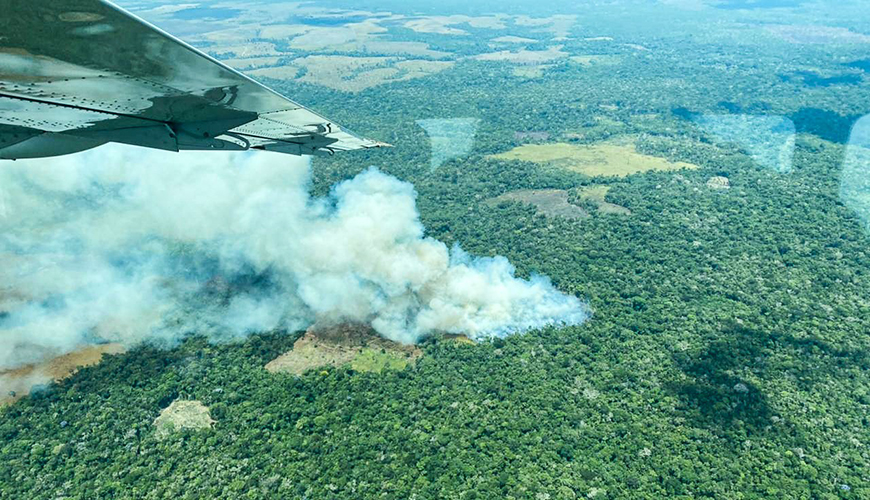
Is there a relationship between deforestation and forest fires?
When looking in detail at images of fires in the Amazon, it can be seen that what emits smoke are not standing trees, but fallen trunks. Apparently, fires are mostly used to convert land use, that is, they cut down trees in the rainy season, wait for the cut material to dry, so that in the dry season the fire is used to clean what had already been cut down.
Although seeing the smoke you might think that we are facing a forest fire, the images show something else: the deforestation process occurs before the fire. For this reason, the institutional view of forest fires should be different in this region than in the Andean area.
What is the relationship between forest fires and climate change?
The gases emitted during fires have negative impacts on a planetary level. Carbon dioxide and methane are released into the atmosphere, greenhouse gases that contribute to global warming and climate change; carbon monoxide, CH4 and nitrogen oxide, which increase ozone production in the troposphere; O3, a pollutant that can be irritating and even toxic; and ammonia (NH4), which generates nitric acid (HNO3) in the troposphere and contributes to acid rain.
In addition, solid particles (smoke, soot) diffuse through the atmosphere, absorbing and reflecting the sun’s rays with a more or less extensive impact on the climate, depending on the dispersion they reach.
On the other hand, global warming affects the appearance of meteorological events such as extreme droughts. It is important to clarify that a drought alone does not cause a forest fire, but it creates an ideal environment for a fire to spread. The problem is the human being and the way he uses fire.
How can you contribute to preventing fires?
Prevention is to prevent them from happening and the way to do it, in the specific case of disaster risk management, is by generating changes in people’s behavior. This is achieved through environmental education, with specific content that appeals to emotions.
In our country, fire prevention has always been approached from prohibition: “do not burn”, “do not make fires”; However, someone who lives in the region and generates solid waste that is not compostable, but does not have a garbage service, what can they do? In those cases, fire is an ally and it is necessary to use it.
The macro problem is not fire but how people use it: the use for soil conversion, the absence of necessary precautions to prevent it from spreading – as in some agricultural or livestock activities – or carelessness, can generate fires that disappear large areas of forest.
It is necessary to look for mechanisms so that the inhabitants of the Amazon can find an economic alternative for their survival within the territory, which guarantees that this forest is maintained in the present and for the well-being of future generations.
On the other hand, in the midst of the financing projects obtained for the Amazon, one could think of one for the creation of forest fire brigades at certain times of the year or for the strengthening of fire departments, with a view to making the capacity for institutional control more in line with the dimension and importance of this territory for humanity.
1. Report “Spreading like wildfire: the growing threat of exceptional fires in landscapes”, by UNEP and GRID Arendal.
